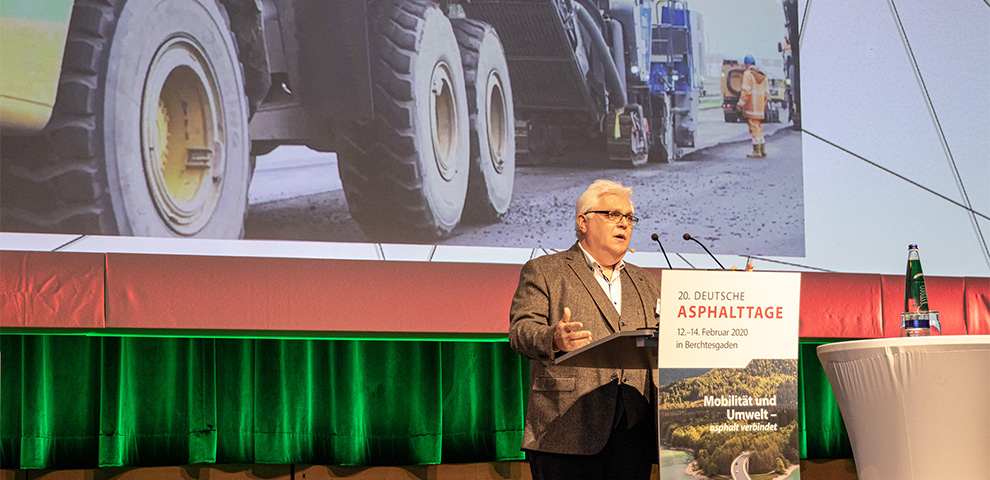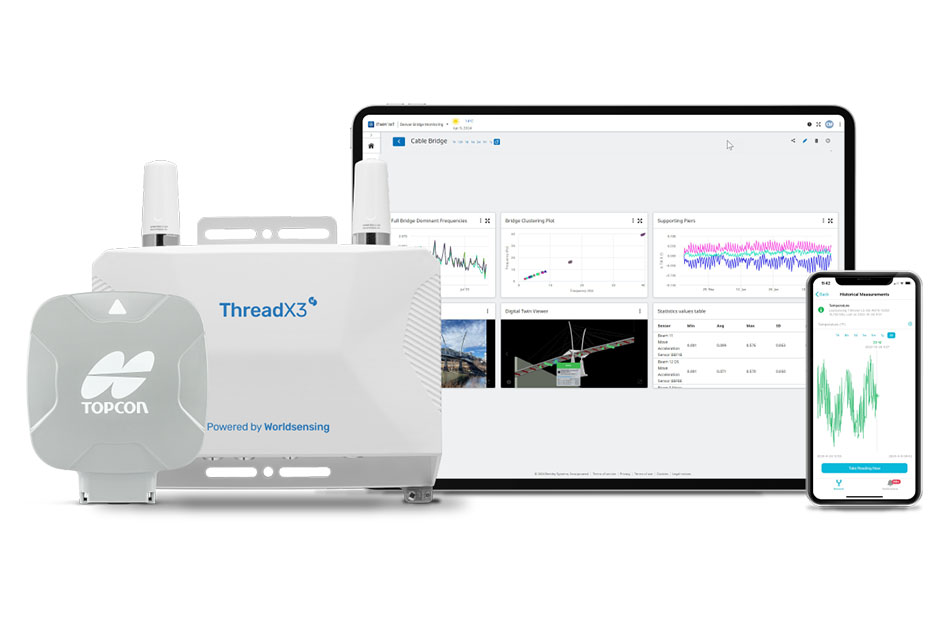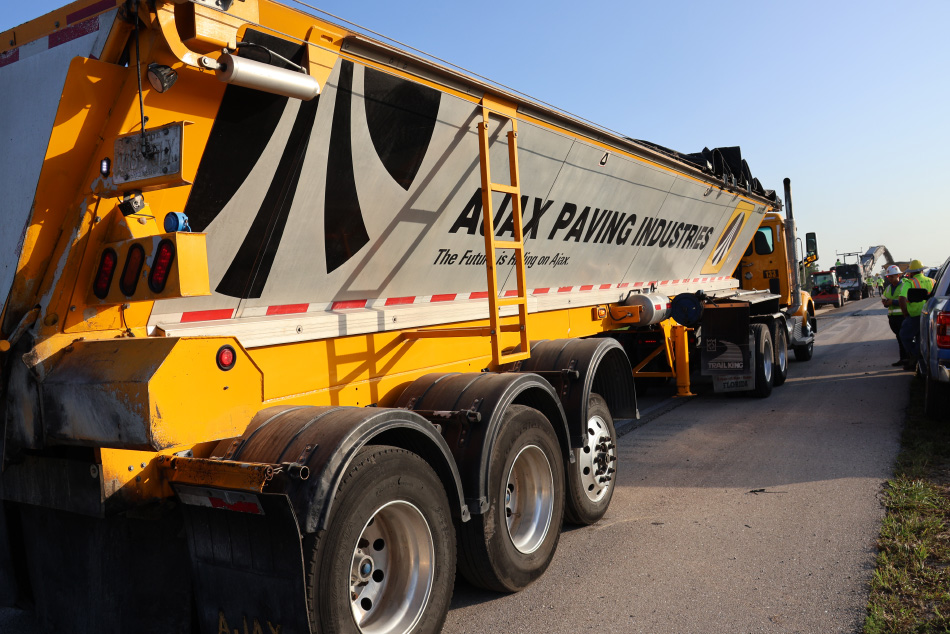Step 1: Scanning
Instead of traditional surveying, Topcon takes a different approach with RD-M1. The integrated device consisting of a scanner, GPS antenna and processing software is mounted on a car. The scan can be completed without any road closures as the car simply joins the traffic flow at speeds of up to 80 km/h. “We usually drive over the same area up to three times, all at different speeds. This gives us a very dense point cloud diagram, and a corresponding high accuracy for the entire surface.”
Step 2: Planning
During this process, the road surface, axes and edges can be captured and realistically represented as a 3D model. “Based on this, we then prepare a virtual plan that specifies down to what level the road needs to be milled below the top surface,” explains Hermanski. “Within this plan, we can make any road surface changes and optimise gradients.”
Step 3: Milling
The 3D plan model is then transferred to a computer in the road milling machine. “The ultrasonic sensors on the machine tell us which milling depth is required at which position for obtaining a homogeneous, flat surface,” explains Hermanski. This is also the core of the SmoothRide process: “Now that we have reached an ideal, level surface, all we have to do is build up the appropriate asphalt thickness. In other words: the higher the precision we work to underneath, the easier it will be at the top.”
Steps 4 and 5: Asphalting and compacting
Professionals know that when building up asphalt, you traditionally get the same, slightly offset waves when laying the surfaces. Using the comprehensive 3D model of the entire road, these waves can be avoided. “We add a percentage compaction factor that does not run linearly across the entire surface. This way, we produce a surface which at first sight may not appear to be flat, but which gives us the required flatness during the last step of the process, namely during compaction.” Therefore, the roller is ultimately the intelligent compaction machine that delivers the final result.
Experience with projects from all over the world
Topcon has already successfully implemented SmoothRide on several major projects. This includes the renewal of the Silverstone race track in England, where the optimum driving line had to be included as an additional fourth axis. Airport projects such as the renewal of ‘Startbahn West’ at Frankfurt Airport and a runway at Bologna Airport were also successfully carried out with SmoothRide. “120 hours for renewal, including measurement – that’s no walk in the park, and I’m incredibly proud of how these projects worked out,” says Hermanski.
The Topcon expert expects a huge rise in the use of SmoothRide solutions. “Countries such as Italy, for example, are currently more open-minded in this regard, and the technology is being adopted much faster. But it will only be a matter of time before this technology is adopted across Europe, as quality and profitability clearly speak for themselves.”















